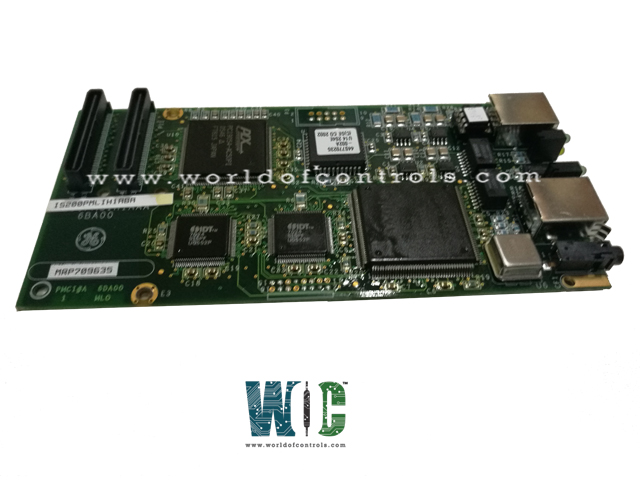
World Of Controls understands the criticality of your requirement and works towards reducing the lead time as much as possible.
IS200PMLIH1ABA - DLAN Daughter Board is available in stock which ships the same day.
IS200PMLIH1ABA - DLAN Daughter Board comes in UNUSED as well as REBUILT condition.
To avail our best deals for IS200PMLIH1ABA - DLAN Daughter Board, contact us and we will get back to you within 24 hours.
Part No.: IS200PMLIH1ABA
Manufacturer: General Electric
Country of Manufacture: United States of America (USA)
Temperature rating: 0 to 60 oC
Current suppression: MOVs
Product Type: DLAN Daughter Board
Availability: In Stock
Series: Mark VI
IS200PMLIH1ABA is a DLAN Daughter Board developed by GE. It is a part of Mark VI control system. The Mark VI system offers flexibility in its configuration, being available as either a simplex control system or a triple modular redundant (TMR) control system. Simplex Control is a single-channel control system configuration. It is simpler and is typically used in applications where high redundancy and fault tolerance are not critical. TMR configuration involves three independent control channels operating in parallel. TMR enhances system reliability and fault tolerance, making it suitable for critical applications where high availability is essential.
The WOC team is always available to help you with your Mark VI requirements. For more information, please contact WOC.
What is IS200PMLIH1ABA?
It is a DLAN Daughter Board developed by GE under the Mark VI series.
What are Software Implemented Fault Tolerance (SIFT) systems?
SIFT systems implement a significant portion of fault tolerance mechanisms in software. This approach leverages the durability and flexibility of software to enhance system reliability. SIFT systems typically involve three identical controllers with a mechanism for data transfer between them, simplifying hardware requirements and reducing potential points of failure.
How do SIFT systems enhance reliability?
SIFT systems enhance reliability by using software to manage data exchanges, voting, and output selections. Software does not degrade over time, ensuring long-term reliability and reducing maintenance needs. Additionally, SIFT systems require minimal hardware modifications, further simplifying the design and enhancing fault tolerance.
What are the main advantages of combining TMR and SIFT systems?
Combining TMR and SIFT systems offers significant advantages in terms of reliability and fault tolerance. TMR systems provide high fault tolerance through their voting mechanism and consistent operation via fixed frames. SIFT systems enhance these benefits by leveraging software's durability and flexibility, simplifying hardware requirements, and reducing potential points of failure. Together, they ensure that control processes remain reliable and consistent over time.